Do you have a question about the Mazda B2300 2001 and is the answer not in the manual?
Details and diagrams of the vehicle's interior controls and features.
Diagrams and labels for the dashboard instruments and controls.
Illustrations and descriptions of door operation, locks, and window controls.
Information on rear seating configurations, including jump seats and cargo areas.
Details about the vehicle's cargo area, including rope holes and lights.
Instructions for adjusting front seats, seat recline, and luggage placement warnings.
Explanation of seat belt features, energy management, and locking modes.
Guidance on using child safety seats and proper seating positions for children.
Information on how supplemental restraint systems work and their interaction with seat belts.
Details on the vehicle's key, its functions, and replacement procedures.
Instructions for locking and unlocking doors using the key and inside lock buttons.
Information on operating the keyless entry system for locking and unlocking doors.
Explanation of the passive anti-theft system and its operation with coded keys.
Details on operating power windows, including one-touch and accessory delay features.
Instructions for opening, closing, and loading the tailgate, including weight limits.
Procedure for opening the vehicle's hood using the release handle and safety catch.
Instructions on how to open the fuel-filler lid.
Description and location of various vehicle safety and information labels.
Guidance on adjusting outside and inside mirrors for optimal visibility.
Information on operating interior lights, including map lights and automatic shut-off.
Guidelines on using unleaded fuel, ethanol blends, and octane ratings for optimal engine performance.
Explanation of the vehicle's emission control system and legal requirements for modifications.
Pre-drive checks including visibility, tire pressure, fluid levels, and surroundings.
Advice for driving in hazardous conditions like ice, snow, mud, and sand.
Guidelines for loading trailers, weight limits, and towing capacities for safe operation.
Identification of key vehicle labels, including VIN and safety standard information.
Explanation of the different ignition switch positions (LOCK, OFF, ACC, START) and their functions.
Procedure for starting a fuel-injected engine and managing idle speed.
Details on shift patterns, clutch operation, and downshifting/upshifting recommendations.
Information on transmission operation, shift modes, and the Powertrain Control Module (PCM).
Explanation of 4WD modes (2WD, 4x4 HIGH, 4x4 LOW) and their operation.
Information on the foot brake, power brakes, ABS, and brake warning lights.
Instructions for activating, deactivating, and setting speed with the cruise control system.
Overview of the vehicle's instrument cluster, including gauges and indicator lights.
Details on operating the fan, temperature, and function selector controls for heating and cooling.
Explanation of AM/FM radio characteristics, signal noise, and reception quality.
Instructions on using hazard warning lights to signal a traffic hazard.
Steps to take if the engine overheats, including safety precautions.
Procedure for jump-starting a vehicle, including safety warnings and cautions.
Information on the vehicle's electrical system protection, fuse replacement, and circuit breakers.
Recommendations and procedures for safely towing the vehicle, including different drive types.
Instructions for changing a flat tire, including locating and using the jack and tools.
Tips to prevent damage to the vehicle's paintwork from acid rain, fallout, and bird droppings.
Detailed instructions for washing, waxing, and cleaning exterior parts of the vehicle.
Guidelines for cleaning and maintaining interior surfaces like upholstery, vinyl, and dashboard.
General precautions and recommendations for vehicle inspection and maintenance.
Maintenance schedules based on normal and special operating conditions.
Checks to be performed by the owner while operating the vehicle and at regular intervals.
Information on recommended engine oil viscosity, API certification, and usage precautions.
Instructions for inspecting coolant level, concentration, and changing coolant.
Steps for contacting Mazda dealers and customer assistance centers for support.
Overview of various limited warranties provided for Mazda vehicles.
Explanation of tire grading for tread wear, traction, and temperature performance.
Procedure for reporting vehicle safety defects to NHTSA and Mazda.
Table of recommended lubricants and fluids for various vehicle systems.
Technical specifications for vehicle dimensions, including wheelbase and cargo bed size.
Data on maximum payload rating, GVWR, and GAWR for different models.
Specifications for engine type, bore, stroke, displacement, compression ratio, and spark plug gap.
Information on tire sizes, inflation pressures, and replacement recommendations.
List of required bulb numbers for various exterior and interior lights.
Details and diagrams of the vehicle's interior controls and features.
Diagrams and labels for the dashboard instruments and controls.
Illustrations and descriptions of door operation, locks, and window controls.
Information on rear seating configurations, including jump seats and cargo areas.
Details about the vehicle's cargo area, including rope holes and lights.
Instructions for adjusting front seats, seat recline, and luggage placement warnings.
Explanation of seat belt features, energy management, and locking modes.
Guidance on using child safety seats and proper seating positions for children.
Information on how supplemental restraint systems work and their interaction with seat belts.
Details on the vehicle's key, its functions, and replacement procedures.
Instructions for locking and unlocking doors using the key and inside lock buttons.
Information on operating the keyless entry system for locking and unlocking doors.
Explanation of the passive anti-theft system and its operation with coded keys.
Details on operating power windows, including one-touch and accessory delay features.
Instructions for opening, closing, and loading the tailgate, including weight limits.
Procedure for opening the vehicle's hood using the release handle and safety catch.
Instructions on how to open the fuel-filler lid.
Description and location of various vehicle safety and information labels.
Guidance on adjusting outside and inside mirrors for optimal visibility.
Information on operating interior lights, including map lights and automatic shut-off.
Guidelines on using unleaded fuel, ethanol blends, and octane ratings for optimal engine performance.
Explanation of the vehicle's emission control system and legal requirements for modifications.
Pre-drive checks including visibility, tire pressure, fluid levels, and surroundings.
Advice for driving in hazardous conditions like ice, snow, mud, and sand.
Guidelines for loading trailers, weight limits, and towing capacities for safe operation.
Identification of key vehicle labels, including VIN and safety standard information.
Explanation of the different ignition switch positions (LOCK, OFF, ACC, START) and their functions.
Procedure for starting a fuel-injected engine and managing idle speed.
Details on shift patterns, clutch operation, and downshifting/upshifting recommendations.
Information on transmission operation, shift modes, and the Powertrain Control Module (PCM).
Explanation of 4WD modes (2WD, 4x4 HIGH, 4x4 LOW) and their operation.
Information on the foot brake, power brakes, ABS, and brake warning lights.
Instructions for activating, deactivating, and setting speed with the cruise control system.
Overview of the vehicle's instrument cluster, including gauges and indicator lights.
Details on operating the fan, temperature, and function selector controls for heating and cooling.
Explanation of AM/FM radio characteristics, signal noise, and reception quality.
Instructions on using hazard warning lights to signal a traffic hazard.
Steps to take if the engine overheats, including safety precautions.
Procedure for jump-starting a vehicle, including safety warnings and cautions.
Information on the vehicle's electrical system protection, fuse replacement, and circuit breakers.
Recommendations and procedures for safely towing the vehicle, including different drive types.
Instructions for changing a flat tire, including locating and using the jack and tools.
Tips to prevent damage to the vehicle's paintwork from acid rain, fallout, and bird droppings.
Detailed instructions for washing, waxing, and cleaning exterior parts of the vehicle.
Guidelines for cleaning and maintaining interior surfaces like upholstery, vinyl, and dashboard.
General precautions and recommendations for vehicle inspection and maintenance.
Maintenance schedules based on normal and special operating conditions.
Checks to be performed by the owner while operating the vehicle and at regular intervals.
Information on recommended engine oil viscosity, API certification, and usage precautions.
Instructions for inspecting coolant level, concentration, and changing coolant.
Steps for contacting Mazda dealers and customer assistance centers for support.
Overview of various limited warranties provided for Mazda vehicles.
Explanation of tire grading for tread wear, traction, and temperature performance.
Procedure for reporting vehicle safety defects to NHTSA and Mazda.
Table of recommended lubricants and fluids for various vehicle systems.
Technical specifications for vehicle dimensions, including wheelbase and cargo bed size.
Data on maximum payload rating, GVWR, and GAWR for different models.
Specifications for engine type, bore, stroke, displacement, compression ratio, and spark plug gap.
Information on tire sizes, inflation pressures, and replacement recommendations.
List of required bulb numbers for various exterior and interior lights.
| Brand | Mazda |
|---|---|
| Model | B2300 2001 |
| Category | Automobile |
| Language | English |
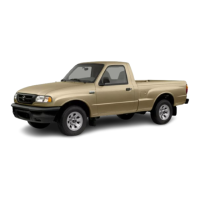
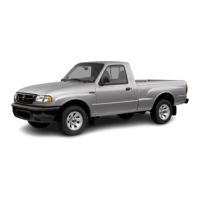
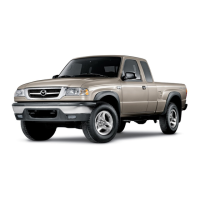
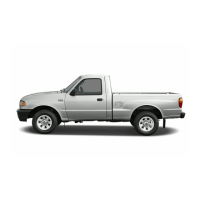
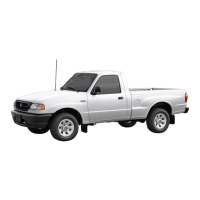
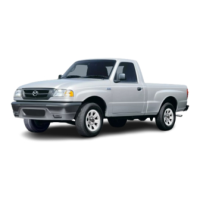

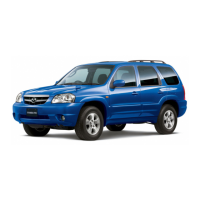
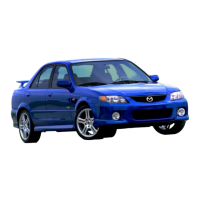

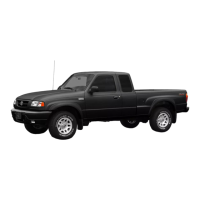

